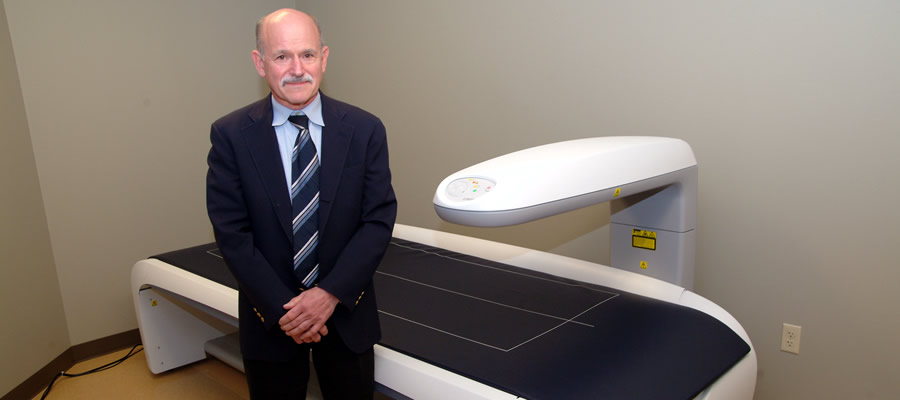Researching a Better Way to Predict Health Risks

What if doctors could predict your risk of developing disease simply by evaluating your body shape?
That's a real possibility being investigated through the Shape Up research study at LSU's Pennington Biomedical Research Center.
"Everybody has a unique body shape," begins Steven Heymsfield, M.D., the study's principal investigator. "That shape is related to your body composition - how much muscle, fat and bone density you have. We also know body shape and composition are related to health risk."While the height and weight measures that combine to determine the body mass index (BMI) are still important, there are a lot of variations within those parameters.
For example, even though two women are both 5-foot-6-inches tall and weigh 130 pounds, one person might have longer legs, a smaller waist circumference or carry more weight in a certain part of her body, such as the midsection or posterior.
Researchers seek to understand the health implications of those differences. "People have always known that within the same height and weight class there are significant differences with regard to health, but we haven't always been able to quantify it very well," he says.
The Shape Up research study explores that correlation between body shape and health by cross-referencing basic clinical testing such as blood tests with new technology that includes 3-dimensional imaging and DEXA scans, which measure muscle, bone and fat.
"The plan is to link the hundreds of shape measures we get from participants to their actual DEXA scan. And, that will tell us their body composition," explains Dr. Heymsfield.
"We'll be able to link their cholesterol levels to their body shape. We'll also look at blood sugar, which measures insulin resistance and is a predictor of diabetes down the line."
Once certain factors are known to be significant predictors of disease, a scale of risk can be developed. Eventually, doctors might use that knowledge in engaging earlier strategies to help slow the onset of disease - or even prevent it all together - in individuals or even entire populations.
The ability to reference a guide that relates body shape to health risk is particularly relevant since sophisticated scanners are becoming more affordable and accessible in doctors' offices and even health clubs.
The old, big, expensive high-tech scanners have shrunk both in cost and in size. Now, the same 3-D imaging programs that allow Internet retailers to measure clients by cell phone and make custom clothing are being adapted for medical imaging.
While the 3-D technology that can produce customized blue jeans is also helping determine whether physical characteristics can predict the onset of disease, the makeup of genes also plays a major role in the next phase of the study.
"Your shape is determined by your lifestyle and your genes," Heymsfield explains. "Whether you're tall or short, hair color, eye color - everything about you - is pretty genetically related in our culture. In the future, we hope to analyze that genetic material and find out what genes influence body shape."
The National Institutes of Health's National Institute of Diabetes and Digestive and Kidney Diseases provided Pennington Biomedical a $4 million grant for the Shape Up study for adults and a $3 million grant for a future work extending the Shape Up study to children.
The Shape Up Adults study is currently looking for people to join in this research. For more information, call 225-763-2602 or visit http://www.pbrc.edu/ShapeUp.
For more information on how you can support this and other projects at LSU’s Pennington Biomedical Research Center, visit www.pbrf.org.



